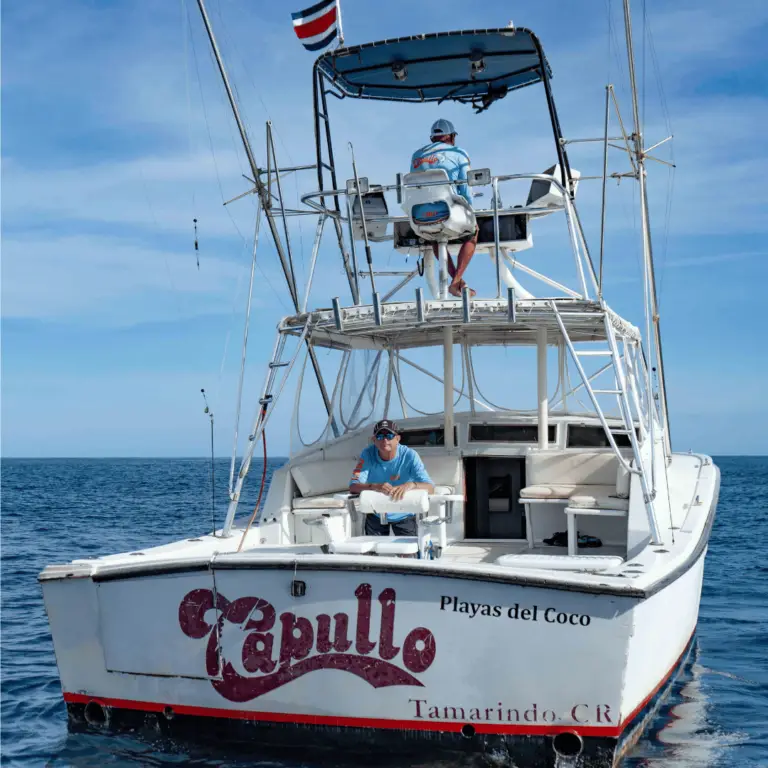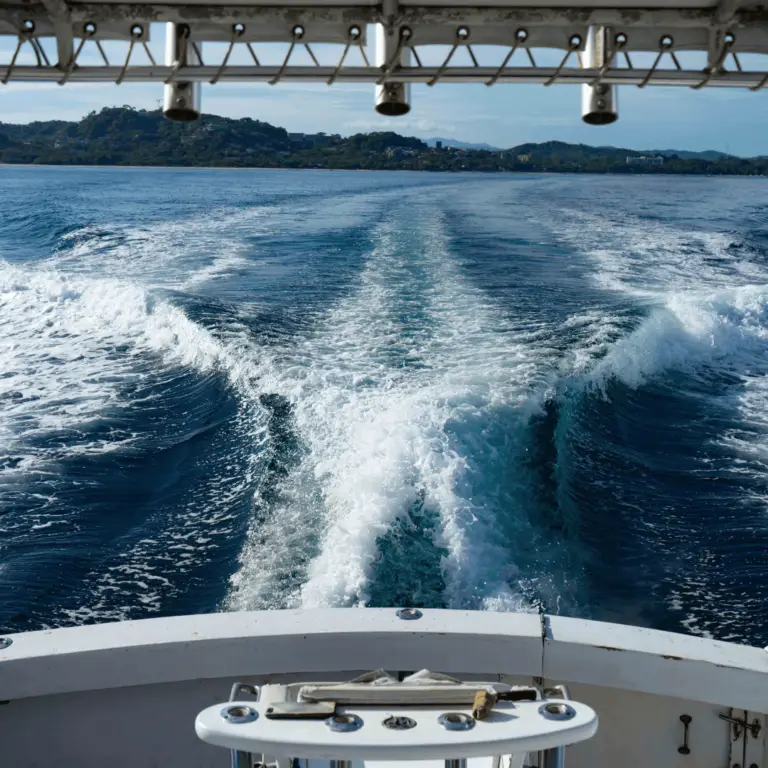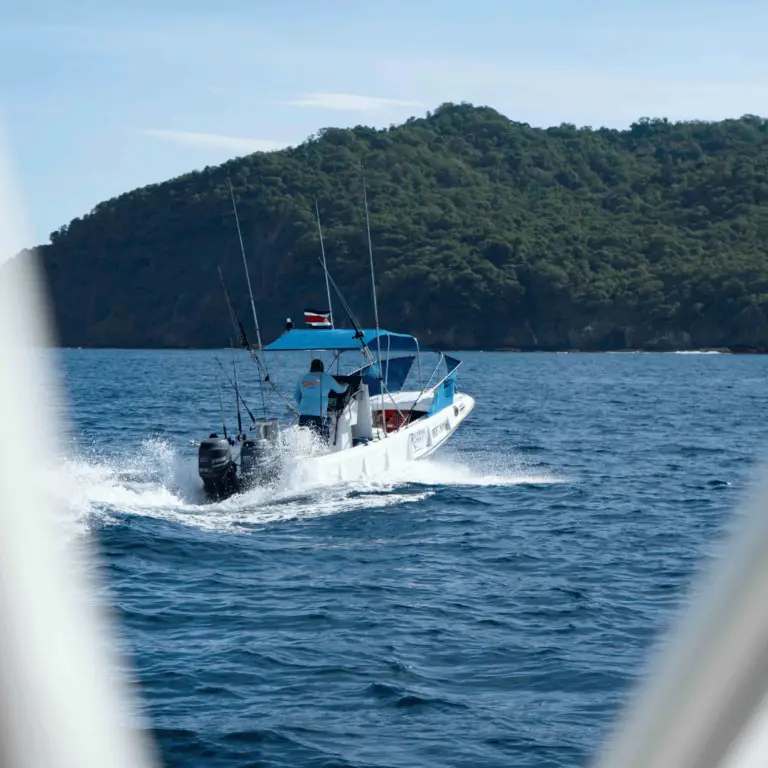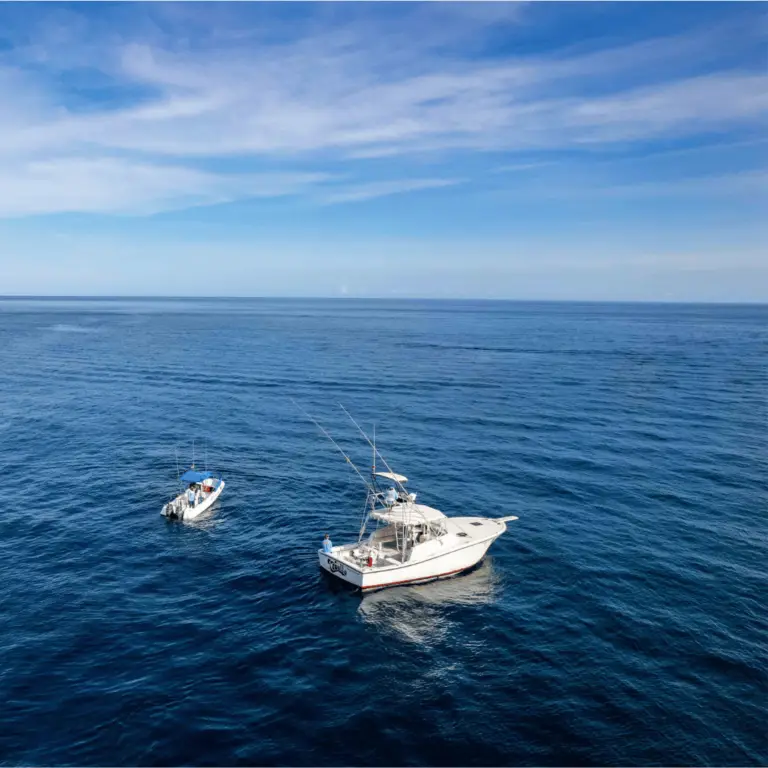Introduction
The marlin, the fastest swimmer in marine life and a significant part of it, holds an important place in sport fishing activities in Costa Rica. However, to grasp the intricacies of marlin fishing, it’s important to get to know the fish more closely and understand where, how, when, and under what conditions to catch it.
By reading the carefully assembled lines below, you can access all this information step by step.
What is a marlin fish? What are its prominent features, appearance, and size?
The marlin fish, which takes its name from the Spanish word commonly used for large finned fish, is a member of the “Istiophoridae” family, which includes large and fast-swimming fish species. It is believed that its name is derived from its resemblance to a long and pointed tool used to splice, open, or repair ship ropes, known as a “marlinspike.”
In various maritime communities and regions, the marlin fish is known by different names, such as “blue marlin,” “white marlin,” “black marlin,” “Atlantic marlin,” and “sword marlin”
It is a highly popular target among sport fishermen worldwide.
What Does a Marlin Fish Look Like?
The marlin fish is typically blue, white, or black in color or has stripes along its body. It has large eyes, especially in comparison to the size of its body, located on the sides of its head.
What Is the Size of a Marlin Fish?
The marlin fish is renowned for its spear-like long snout, large eyes, swimming ability, and warrior-like nature. Depending on its species, a marlin fish can be as small as 0.4 to 1.2 inches when born. Despite starting small, it rapidly grows and reaches a length of 1 to 5 meters in adulthood. It can weigh up to 1000 kg and has a lifespan of 10 to 20 years.
What are the types of Marlin Fish That Can Be Caught In Costa Rica?
Marlin fish are typically found in warm, temperate, and open seas. Costa Rica, with its warm ocean currents, hosts a rich marine life. It is known for being a region where marlin fish are abundant, as it lies within the migration routes of marlins. Costa Rica is particularly renowned as a prime and significant fishing destination, especially for the blue, white, and black marlin species. The Pacific coast of Costa Rica offers one of the world’s finest marlin fishing locations.
What Are the Best Places To Catch Marlin Fish In Costa Rica?
Popular port towns like Quepos and Los Sueños, as well as regions like Tamarindo, Golfito, Flamingo, and Drake Bay, are among the preferred choices for sports fishermen seeking to embark on marlin fishing adventures. The facilities, tour operators, and fishing guides catering to sports fishing in the region provide significant opportunities for both experienced and novice anglers to catch these types of fish.
Are There Marlin Boat Fishing Charters in Costa Rica?
Costa Rica, a globally renowned destination for sport fishing (recreational fishing, amateur fishing or leisure fishing) offers a wide range of fishing charter services for those looking to catch marlin fish. Numerous tour operators provide this service.
Charters, conducted on boats equipped with experienced captains and professional crews, may include services such as professional guidance, boat and equipment provision, fishing permits and regulations, supply of fishing gear, transportation (including airport transfers), and meal services.
If you are in need of a fully supported, professional marlin fishing charter, feel free to contact us and embark on an unforgettable sport fishing experience.
The path to a successful marlin fishing expedition often involves an experienced fishing guide or charter operator.
What Is the Best Time to Catch Marlin Fish in Costa Rica?
Costa Rica is a suitable and popular destination for marlin fishing. So, what is the best time to catch marlin fish in Costa Rica?
The best season for catching marlin in Costa Rica is typically during the “dry season,” which occurs between December and April. The dry season is known as the time to pursue large game fish like marlin. Therefore, in response to the question of “When is marlin fishing season in Costa Rica?”, it can be said that it typically extends from December to April.
However, marlin fishing is possible in Costa Rica year-round. But months with rainy weather and rough seas, such as September and October, are considered more challenging times for marine sport fishing.
Does Costa Rica Allow People To Keep Marlin Fish? (Local Regulations and Catch and Release Policies for Marlin Fishing in Costa Rica)
In Costa Rica, catch and release policies are always implemented to preserve large species like marlin. Therefore, when planning marlin fishing in Costa Rica, it’s important to pay attention to local regulations and catch and release policies as they are key to sustainable fishing practices.
Each region, marina, and fishing tour operator in Costa Rica has specific rules that encompass fishing seasons, size limits, and daily catch limits. Therefore, before engaging in marlin fishing in any region of Costa Rica, it’s essential to check the local regulations of that area.
Many fishing operators in Costa Rica adhere to catch and release policies, especially to protect large fish. Costa Rica, in general, promotes sustainable fishing practices.
How to Catch a Marlin Fish?
To catch marlin fish -one of the ultimate goals for marine sport fishermen- several steps need to be followed, including selecting the right location, acquiring suitable and professional equipment, choosing a large boat, and employing the correct techniques. These steps can be outlined as follows:
- Opt for regions with warm and temperate seas like Costa Rica and the Gulf of Mexico.
- Acquire appropriate fishing equipment, consisting of heavy-class fishing gear and a large, sturdy reel, to handle the big and powerful marlin.
- Fish for marlin using large boats where dealing with the sizable marlin is relatively easier.
- Employ the “trolling” technique, a widely used and effective method for marlin fishing.
Catching marlin can be challenging even for experienced fishermen. Therefore, working with a professional guide after deciding to catch marlin can help you learn the right techniques and increase your chances of success.
What Gear Do You Need To Reel In Marlin?
- Heavy-class fishing rods
- A large and powerful reel
- Durable thick fishing line
- Ballyhoo and artificial baits
- A fighting chair
- A harness
The cost of the equipment needed for marlin fishing can vary significantly depending on the quality, brand, and specifications of the equipment. If you prefer to use high-quality equipment with excellent features, the cost can reach thousands of dollars.
Instead, you can obtain all the necessary equipment at more affordable prices through a fishing charter. Additionally, a charter provides you with the opportunity to work with a professional guide and experienced crews, making it a more economical and efficient option for marlin fishing.
What is the Best Technique To Catch Marlin? (Fundamental Principles of the “Trolling” Technique)
For catching marlin fish, the best and most commonly used technique is known as trolling. To effectively employ the trolling technique, one must pay attention to factors such as proper tackle selection, bait choice, bait depth, speed adjustment, and more.
In trolling, the fishing tackle is attached to the back of the boat, and baits are dragged through the water alongside the boat. When a marlin fish strikes the bait, the line is pulled in to catch the fish.
Key steps to successful marlin fishing using the trolling technique include using heavy-class fishing tackle, selecting live or artificial bait, adjusting the speed appropriately, keeping the baits at a shallow depth, using strong and durable fishing line, tracking the fish, and prioritizing safety when dealing with the powerful marlin.
When fishing for the formidable marlin, safety should always be a top priority, as sport fishing can become a risky activity if not conducted carefully.
Given that marlin fishing requires experience and expertise, working with a professional guide is the safest and most effective approach for both safety and success.
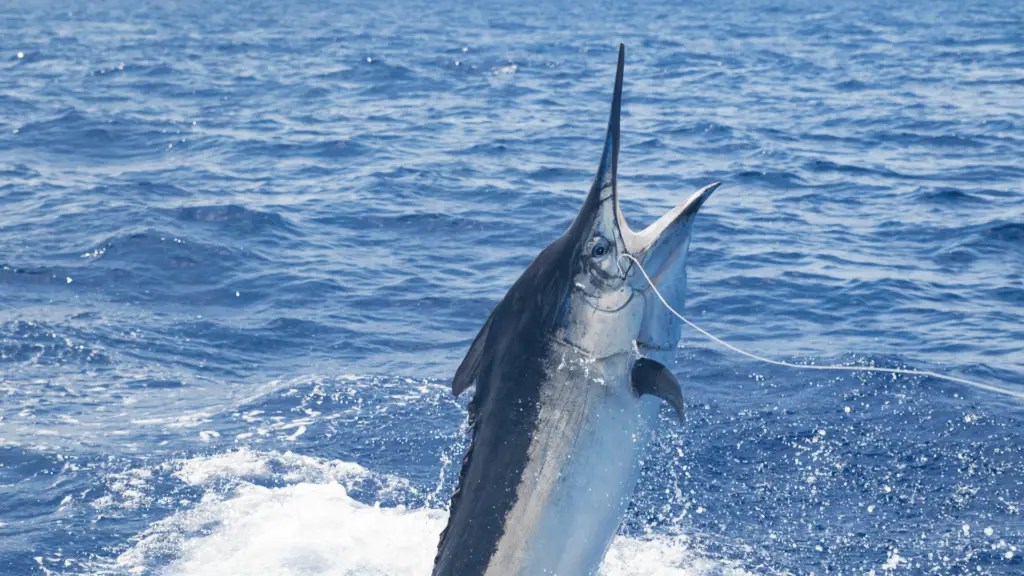
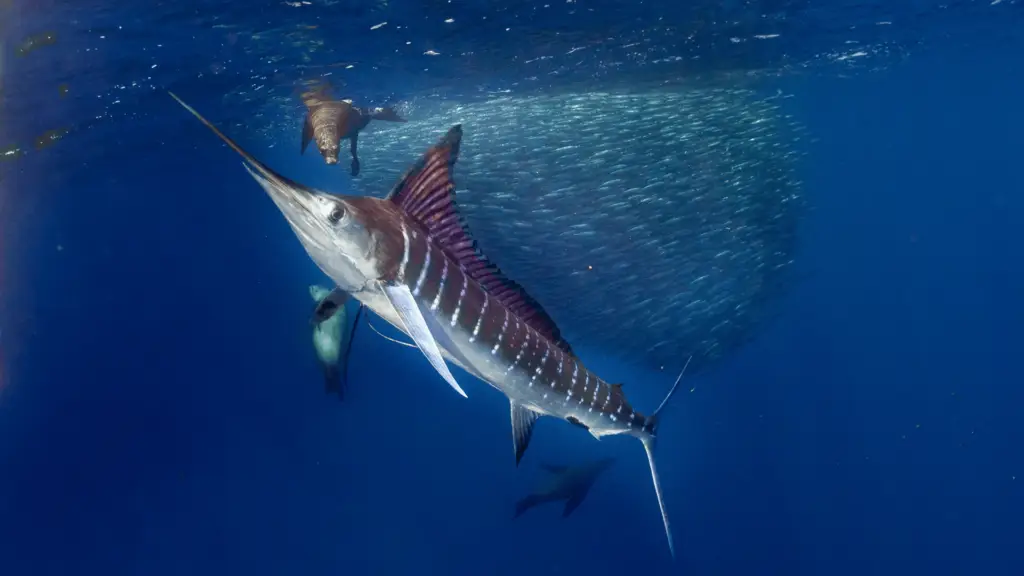
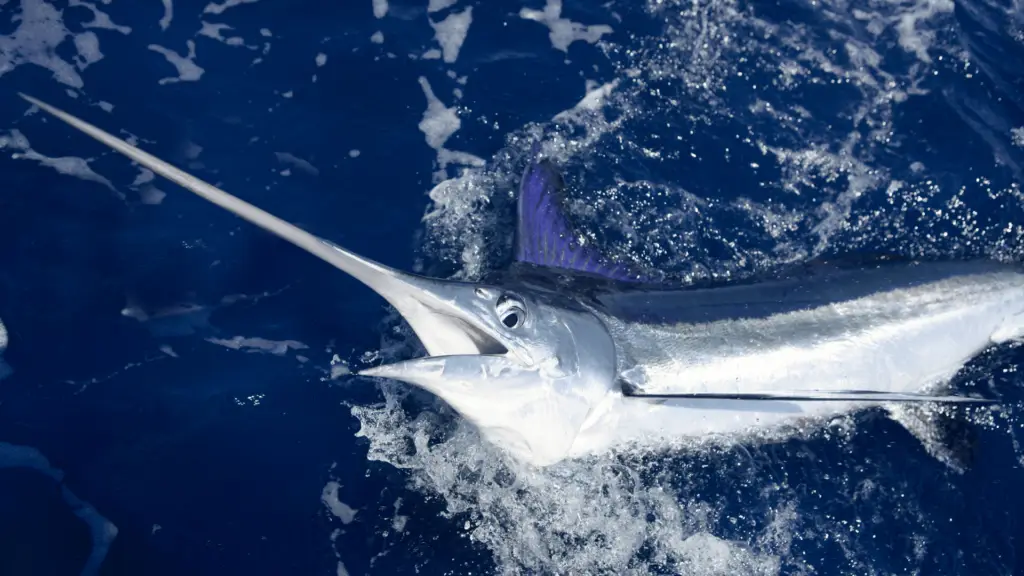
Are Marlin Fish Dangerous To Catch?
In marlin fishing, it’s essential to be cautious and take precautions. Otherwise, there can be risks associated with the strength and speed of marlin, such as sudden leaps onto the boat, breaking the fishing line, and potential harm to the boat and/or individuals. Additionally, heading out for a fishing expedition in unfavorable weather conditions can also pose a potential risk.
By taking the proper safety measures, you can mitigate the potential dangers of marlin fishing. Ensuring equipment quality, maintaining boat safety, employing the correct fishing techniques, going fishing during the right season, all help minimize the inherent risks that can be associated with marlin fishing.
To safely conduct marlin fishing, it’s crucial to have experienced hands applying fishing techniques. Even using a fighting chair and harness during fishing can pose a significant risk in inexperienced hands. Similarly, professional guidance may be needed to prevent marlin from causing harm to the boat or individuals during catch and release practices.
Frequently Asked Questions About Marlin Fish
How many types of marlin fish are there?
There are roughly 10 types of marlin fish. Among these, blue marlin, white marlin, black marlin, and striped marlin are the most prominent.
How fast does marlin fish swim?
Marlins are known as fast swimmers of the seas. Blue marlins can swim at speeds of 60-80 miles per hour, white marlins at speeds of 40-50 miles per hour, and black marlins at speeds of 50-60 miles per hour. Their ability to swim swiftly makes marlin fish successful in chasing their prey.
Furthermore, their fast swimming capabilities make marlin fish an attractive target for sports fishermen.
How long do marlins live?
The lifespan of marlin fish varies depending on their species and environmental conditions, but it generally ranges from approximately 10 to 20 years. Black marlins, in particular, tend to have longer lifespans compared to blue and white marlins.
What’s the difference between marlin and swordfish?
There are many similarities between marlin and swordfish, but these two fish are distinct species found in the oceans.
Marlins typically have a longer and slimmer body compared to swordfish and tend to be longer in length.
Additionally, marlins can change their color and shade depending on their surroundings. They can transition to brighter and more vibrant colors based on their environment, whereas swordfish do not possess this color-changing ability.
Swordfish generally inhabit deeper waters compared to marlins.
Both marlin and swordfish are appealing targets for those engaged in marine sport fishing.
Are Marlin fish hard to reel in?
Catching marlin fish, which are known for their large size, strength, and fast swimming capabilities, is not an easy feat in marine sports. It’s not just about catching them but also controlling their power once caught.
To turn a challenging catch into a relatively easier experience requires suitable equipment, proper strategies, and a significant amount of experience. Only in this way can the exciting battle become a prestigious achievement for sports fishermen
What do Marlin fish eat?
Marlin fish are carnivorous creatures and feed on other marine life. Their primary prey includes tuna, squid, octopus, sardines, and other smaller fish.
Where do Marlin fish breed?
The primary breeding grounds for marlin fish are warm and temperate seas. When the breeding season arrives, marlin fish, typically found in open waters, tend to gather in schools. They release their offspring into surface waters during this period.
Is Marlin fish meat edible?
Marlin fish meat is edible. marlin fish, known for its white and flavorful flesh, is consumed as seafood in many regions of the world.
What is the biggest Marlin fish ever caught?
The largest marlin fish ever caught have reached lengths of nearly 5 meters and weighed close to 700 kg.
Are marlin fish endangered?
There are concerns about the potential endangerment of marlin fish, as their populations have been observed to decrease in many regions. Therefore, implementing sustainable fishing practices for marlins is important. Without proper fishing methods and necessary conservation measures, the marlin fish population could be at risk.
In Costa Rica, many charters adopt catch and release policy for marlin fish to address the threat of depletion. Additionally, there may be specific size and season restrictions in marlin fishing.
If you’re interested in sports fishing and considering marlin fishing in Costa Rica, it’s advisable to contact experienced guides or charter operators to learn more about both local fishing regulations and marlin fishing.

